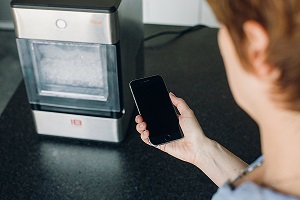Uncategorized
9 Tips On Creating A Brand Name For Modern Businesses
You don’t need to be a marketing expert to understand the importance of the name of a product or business.
Good and memorable brands can give you a positive image of a company or a product the moment you hear it. And for a lot of consumers, a recognizable brand behind a product or service is good enough to to induce a perception of high credibility.
The irony is that even though most people realizes the significant benefits of branding, many startups are still trading with generic trade names that don’t help their customers remember them.
Small business owners might argue that they are just running small operations. Therefore, using a fancy brand name could actually confuse the consumer. Those who are self-employed might also argue that they are their business, and therefore, it’s totally sufficient to do business under their own names.
Although this line of thinking has it’s arguments, the real problem will arise when a business starts doing well and have plans to scale up.
Without a good existing brand name to use for mass marketing, it could be tougher to get the attention of new prospects. And if a new brand is used when scaling up, the business could risk alienating existing loyal customers.
So what should you look for when creating a good brand name?
Here are some tips for the modern business. You can choose to apply just 1 of them or a combination of more than 1. Just remember not to be too much of a perfectionist or you could spend months just exploring ideas for a brand name. That will be a lot of time wasted and procrastinating.
1) Keep it short and no longer than 4 consonants

The longer your brand name is, the higher the possibility of it getting lost in the minds of consumers. This is because it takes more effort to remember it. Some people might also find it hard to read and pronounce.
Ideally, you’d also want it to contain no more than 9 characters. The more characters your brand makes up, the more likely consumers will have to move their eye to fully read it.
A lot of times, prospects only spend a split second having a look at brand while scanning through retail shelves and media advertisements.
Meaning if your brand is too long for someone to digest in a glance, you are putting too much work on the shoulders of your target market.
You won’t find many famous brands that contain more than 4 consonants. And the few that does usually rebrands to a simpler brand to rectify their mistake. For example General Electric is now more known as just “GE” and Federal Express is now affectionately known more as “FedEx”.
Some companies that insist using more than 4 consonants use a different way to make their names stick in the minds of consumers through harmonics… which is point #2.
2) Harmonics
This describes how the name sounds like when pronounced. Words that rhythm have a high tendency to be remembered.
This tactic is heavily deployed by businesses that use 2 words or more as their brands. The rhyming can be both at the front or end of words.
For example:
- PayPal (front)
- BlackBerry (front)
- 7 Eleven (end)
- FitBit (end)
The power that alliteration and phonetics in brand names have in influencing memorability is undisputed. Some names just have a “ring” to them and can leave a lasting impression from the first time you hear it.
3) Describe your nature of business within the name
Ideally, you’d want your target market to know what your business generally does the moment they see your brand.
Bearing in mind that you want to reach out to prospects that have never heard about your business, it definitely helps when your business nature is easily identifiable in your brand.
For example, Hostgator is one of the leading brands in the web hosting industry. And although a lot of people will not know what it generally does, web developers will immediately be able to relate to it due to “host” in it’s brand.
And if you are serving a very specific niche, using a niche-related keyword can really strike a tune with your target audience as they will immediately know that you offer something specific to them.
Examples:
- TripAdvisor
- Photoshop
- OneDrive
- BurgerKing
It could be well worth it to spend some extra time in creating such a category of words for branding.
4) Wordplay
There are more and more businesses these days that use wordplays as the brands.
4 categories of wordplay seems to dominate the market currently.
The first type is a meshup of 2 industry-related words to create a new word. The names created contain words that cannot be found in the dictionary. Yet the consumers can still recognize what the business does because the result makes sense.
Example:
- Groupon (groupbuy and coupon)
- Nespresso (Nestle and espresso)
- Travelocity (Travel and velocity)
The second type is to use a common word or phrase, and tweak some letters to pivot it towards a different meaning while sounding a lot like the original word.
Example:
- Sendblaster (sandblaster)
- Freakonomics (economics)
- Verizon (horizon)
The third category is to completely create a new word.
A rising trend among startups is in the use of new made up words that have no implied meanings.
Because the promoters behind these companies probably want to create an identity that starts from a clean slate, the best way to achieve that is to use short snappy words with no meaning.

|
Can you believe? |
The main criteria for the such a brand name selection process usually has a focus on point #1.
Example:
- Envato
- Trulia
- Rovio
This strategy is commonly used by a lot of tech companies and can grant the companies advantageous legal benefits mentioned in point #5. Just do a basic search on whether these words have any negative connotations in a foreign language.
The fourth and final category is intentional misspelling or some call it word hacks.
- Houzz
- Patreon
- Flickr
5) Use a common unrelated word
The most identifiable brands in the world uses common words that don’t remotely relate to what they do. Such brands offer the most intellectual property protection should you need to defend your rights in future.
This is because if you have build a brand using a completely unorthodox word(s), infringement can be easily proven unless you have hired a bad lawyer. A registered trademark will help.
Example:
- Amazon
- Apple
- Subway
- Shell
- Caterpillar
The drawback of using such a branding strategy is that you need a huge budget for consumer education in order to build your brand. Otherwise, you will never be able to get people to remember you.
6) Does it pass the audio test?

This is a very basic but often forgotten element in branding. The question you want to ask yourself is whether there is a high probability of consumers misspelling it after hearing the brand.
Avoiding this minefield is of paramount importance as you could be wasting a huge portion of your marketing budget in mass market advertisements if the audience gets confused.
It’s even more important if you expect prospects to visit your website after viewing your ads.
They could very well land on somewhere other than your website. This leads us nicely to the next naming factor.
7) Is the domain available?

At this moment in time, the .com domain extension is the dominant force on the internet. And you need to secure your domain if you want to be taken seriously.
If from a registry check, you find that your domain is already registered by someone else, reach out to the owner to see if it’s for sale. Just because it’s not available for hand registration doesn’t mean that you can’t buy it on the resale market.
If you are not able to secure your domain in .com, I strongly suggest that you expand the width of your exploration of brand ideas. This is because you will be losing traffic to the .com. And if your business succeeds eventually, you might need to pay thousands of dollars to get it by then.
And since we are on this topic, also make a check on whether the social media handles are available too. Who doesn’t like a vanity URL?
8) Don’t trap yourself into a small market

A lot of marketers emphatically coach their students to dig deep into niche markets. It can seem like there is no other way according to their teachings.
Although this makes sense for a small business, the overwhelming issue you will face as the business expands into more product verticals is the limitations your brand has trapped itself in.
For example, if you’re using a brand “Headache Relief”, you might face a branding stumbling block should you want to start selling products for back pain.
In this case, a better way to brand is to go with “Pain Relief” instead. This is so that it would be easier to branch out into other verticals as the business expands in the future.
9) Do a trademark search
Don’t be surprised to find that another business is trading under the name you want to use for your business. Almost every word is probably trademarked in one form or another by businesses.
You can still operate your business under the same name as long as you are serving a totally unrelated market and industry.
The last thing you want is to be infringing on someone else’s trademark after spending so much time and resources on branding.
A great example is the Delta brand. There are so many companies using Delta as their brand.
- Delta Airlines
- Delta Faucet
- Delta Community Credit Union
- Delta Kayaks
- etc
You don’t see them throwing lawsuits at one another for trademark infringement because they are operating in unrelated businesses that don’t confuse consumers. However, it would be better to err on the side of caution if you intend to use a widely trademarked brand name.
The fear of stepping on the toes of a company with huge financial muscle is probably a reason why many startups are using made-up words for their brands. This minimizes the risks of infringement.



